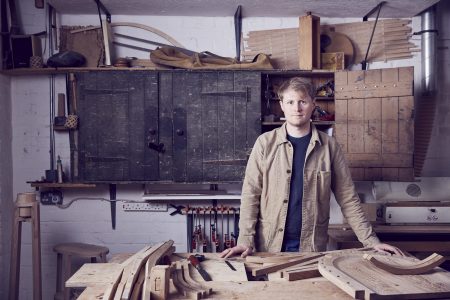
Material Tendencies: Konstantin Grcic
Architonic spoke to the trained carpenter and industrial designer from Munich about his passion for design history, materials and development processes
Konstantin Grcic is renowned for the precision, care, and formal rigour he brings to the design process. His work expresses, above all, simplicity and functionality.
Anita Hackethal, Architonic: Which material would you choose if you had to restrict yourself to working with just one for the next three years?
Konstantin Grcic: Steel fascinates me, because it’s a multi-faceted material and can be worked in diverse ways in a variety of processes. And it’s a material that has helped define modern furniture design –for example, in the first tubular steel furniture in the 1920s. Steel is, additionally, a plentiful resource and a material that stands in a congruous relationship to what furniture is. It always includes this industrial character.
At what point within the design process do you decide in favour of a specific material? What comes first: the shape or the choice of material?
Design concepts frequently arise out of a process that, in turn, is closely associated with a certain material. It’s very often the case that material and process play a role, for the simple reason that the design is always shaped in part by the reality of its production. That’s why it’s important to fairly quickly give ideas this grounding of “How will this work in practical terms?” The processes themselves are usually very inspiring and help in the search for a solution. The material poses certain requirements, and I see that more as a quality than a limitation.
Is there a material with which you don’t have quite so much experience, but would like to explore a bit further?
Textiles are a material of the future because they’re versatile and lightweight. At the same time, they have a lot of strength and performance capacity. With 3D knitting, for example, the textile itself is put together so that it meets the demands of the purpose it’s designed to serve. I have a certain amount of experience with textiles, but it’s an extensive field that still holds a great deal for me to discover.
Do new technologies and manufacturing processes influence your choice of materials?
Digital production changes processes, which naturally gives rise to other materials and material compositions. I find that that expands the possibilities. But it doesn’t mean the end of the classic materials –wood, steel, glass, plastic. Those are all materials that will continue to define the furniture industry very strongly. However, new materials are also appearing, and with them, new manufacturing methods that themselves open up new processes for us in design development and pose certain challenges. I’m always hesitant to make great pronouncements about how everything is going to change. The changes are clearly palpable, yet they’re closely interwoven with everything that’s already there, and also with what will no doubt remain as it is –which is also worth something.
This article originally appeared on Architonic, where TLMag presents articles in French and English.















